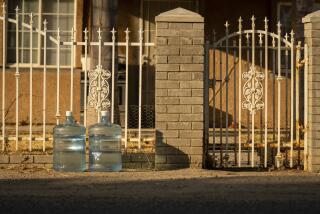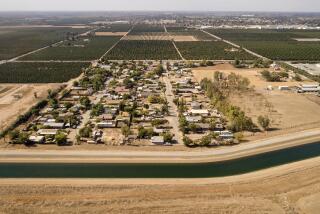Let’s Solve Our Water Woes
- Share via
As traditional sources of water dry up, increasingly thirsty Orange County is being forced to learn what tech-enamored investors discovered as the dot-com bubble burst--it pays to diversify your portfolio. But, just as investors must do their homework before diversifying, county residents and businesses will have to spend considerable time, effort and money to ensure that the region’s future water needs are met.
Chances are good that most of us don’t know where the water we use to shower and keep the lawn green originates. But where water comes from and what it costs to transport and purify are issues that no longer can be ignored. And proposed solutions that have been attacked by those who don’t want them in their backyards must be embraced--or there won’t be enough water to keep those precious backyards green.
The county’s water supply is being hit by a triple whammy. Too much water is being drawn from the aquifer that supplies water to 2.2 million people in the northern part of the county. Cities from Anaheim to Irvine are becoming more reliant upon imported water. But California is under federal order to reduce water drawn from the Colorado River and there’s less water available from Northern California. Topping it all off, evidence suggests that the region is on the verge of a prolonged drought.
The most immediate threat comes from the aquifer that supplies 75% of the drinking water in North County. The overdrawn and under-replenished reservoir has sunk to dangerous levels.
Water agencies will have to cut back pumping next year. Just how painful the impending cutback will be won’t be evident until the rainy season.
Some of the proposed solutions rely upon new technology. A consortium of Southern California water districts has proposed seven oceanfront desalinization plants, including one in Dana Point, at a cumulative cost of $1 billion. Others are controversial--including the installation of pumps at the bottom of former sand and gravel mines, a project that would help replenish the aquifer, but that also would kill thousands of fish and temporarily send a putrid odor into Villa Park and Orange.
The perpetual plea for increased conservation will grow louder. Water-wise Southern Californians who already manage with less water per capita than residents elsewhere in the U.S. must recognize that the end of cheap water means learning to conserve even more of the precious stuff.
More to Read
Sign up for Essential California
The most important California stories and recommendations in your inbox every morning.
You may occasionally receive promotional content from the Los Angeles Times.










